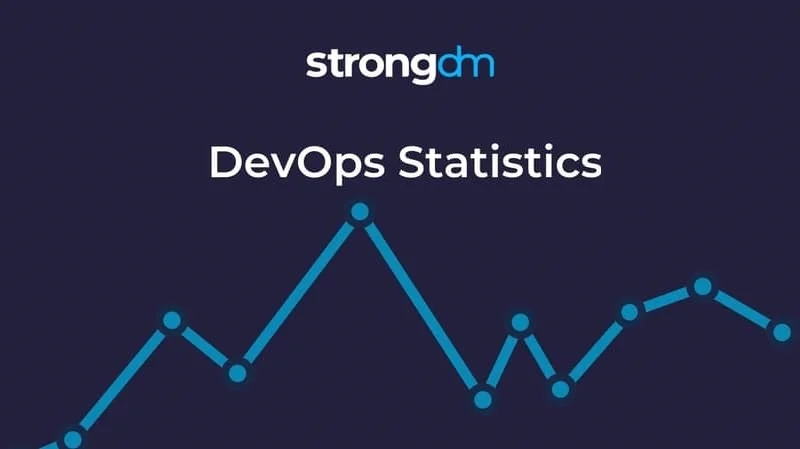

Written by
Georgi TodorovLast updated on:
January 2, 2025Reading time:
Contents
Built for Security. Loved by Devs.
- Free Trial — No Credit Card Needed
- Full Access to All Features
- Trusted by the Fortune 100, early startups, and everyone in between
The future is looking very bright for anyone involved in the DevOps industry. According to research undertaken by Global Market Insights, the future of the industry shows encouraging numbers. In 2019, for example, the size of the DevOps market exceeded $4 billion and is projected to grow at a CAGR of over 20% between 2020 and 2026.[1]
If you’re looking to adopt a DevOps strategy in 2026 and beyond, identifying and understanding industry trends will help you make the right decisions.
Knowledge of DevOps is also important if you’re considering in-house software development, hiring a third-party software development team, or investing in critical cloud services such as those from AWS, Azure, or GCP.
What is DevOps?
DevOps is an advanced set of practices and technologies that power the automation of development, testing, and deployment. When implemented across an entire organization, it creates efficiencies across various IT processes.
Some of the most popular DevOps tools include:
- Maven
- Selenium
- Git
- Terraform
- Kubernetes
- Ansible
- Docker
- Jenkins
- Nagios
DevOps Adoption Statistics
While the market is already huge, it’s still evolving because DevOps has proved to be a higher priority than ever before.
Some extraordinary things are also taking place in DevOps. For example, according to Gartner, over 85% of organizations will be adopting a cloud computing strategy by 2025 and 95% of new digital workloads will take place on cloud platforms, a 30% increase from 2021.[2]
Here are a few more DevOps adoption statistics you might be interested in:
- In 2021, 83% of IT decision-makers reported implementing DevOps practices to unlock higher business value.
- IDC predicts that the DevOps market is expected to grow from $2.9 billion to $8 billion by 2022.
- 99% say DevOps has had a positive impact on their organization in 2020.[3]
- 61% say implementing DevOps helped them produce higher quality deliverables in 2020.[3]
- 49% of companies report a reduction in time-to-market software and services in 2020.[3]
DevOps Growth Statistics
The Global DevOps Market size was estimated at USD 4,311.95 million in 2020, and was expected to reach USD 5,114.57 million in 2021. At a compound annual growth rate of 18.95% it is estimated to reach USD 12,215.54 million by 2026.[4]
Problems with Current Infrastructure Access Management
DevOps has become a vital function in all organizations because infrastructure access management falls within its purview. In short, access management has a direct correlation with workplace productivity. Poor access management practices can drag down productivity while efficient workflows can yield security and compliance benefits, in addition to productivity gains.
At the core of DevOps is accelerating the development process, but when timely access is hampered, it’s clear that something is wrong. Here are some stats taken from a study commissioned by StrongDM to highlight the issues many organizations face with respect to access management and efficient workflow processes.
- 88% of organizations require an access request to go through two or more employees to be approved and granted.
- 25% of organizations require an access request to go through four or more people to be approved and granted.
- 50% state that it takes hours, days, or weeks to fulfill the average access request.
- 60% of organizations report access challenges with cloud providers, 57% with databases, and 57% with data centers and servers.
- Organizations report being less secure and less compliant because 65% use team or shared logins, 42% use shared SSH keys, and 41% cite gathering evidence for compliance as a top challenge.
- 93% of organizations have technical staff with access to sensitive infrastructure, which is an indication of how access has been democratized.
- Over 50% of all companies who took part in the survey struggle with assigning, rotating, and tracking credentials.
- 47% struggle with onboarding employees and contractors.
- 52% of organizations continue to face challenges with the time required to simply grant access to critical systems.
Amazon DevOps Statistics
Amazon DevOps has an impressive reputation. The move from physical servers to the Amazon Web Service (AWS) cloud in 2010 enabled the delivery of applications and services at a higher velocity. It started using a continuous deployment process managed by an internal system called Apollo. This system gave developers the ability to deploy code whenever they wanted and to whatever servers they needed.
The end result was that by May 2011, Amazon was deploying new software to production servers an average of every 11.6 seconds. During its busiest times, 1,079 new deployments were sent into the production environment in one hour.
DevOps Benefits Statistics
If there’s anyone out there with doubts about the validity of DevOps or thinks that hiring a DevOps engineer is a bad investment, let’s share a few statistics for the doubters.
- Traditional Ops is 41% more time-consuming overall
- If you use Traditional Ops, you’ll spend 21% more time putting out fires
- On average, Traditional Ops spends an average of over 7 hours per week on communication
- With DevOps, 60% less time is spent handling support cases
- With DevOps, 33% more time is spent on infrastructure improvements
In addition, if you implement DevOps in your organization you can reap the following benefits:
- Improve the quality of software deployments
- Release software more frequently
- Improve company-wide cooperation and collaboration
- Improve the quality of code production
DevOps Engineer Statistics
DevOps has blossomed in many organizations, which has led to a bidding war for top DevOps talent. Here are some stats that help tell the story of the DevOps jobs boom.[5]
- Devops Engineers are paid an average annual salary of $103,571.
- The top 10% of highest-paid Devops Engineers earn as much as $134,000 or more.
- The majority of Devops Engineers are located in GA, Atlanta and NY, New York..
- Devops Engineers are most in-demand in New York, NY.
- There are over 11,029 DevOps engineers currently employed in the US.
- The most common ethnicity of Devops Engineers is White (56.0%), followed by Asian (28.7%) and Hispanic or Latino (7.2%).
- 16.1% of all DevOps engineers are women, while 75.7% are men.
- In 2021, women earned 93% of what men earned.
- The average age of an employed DevOps engineer is 39 years old.
DevOps Market Statistics
- The management DevOps solutions segment in the US held more than 65% of the DevOps market share in 2021 and is estimated to exhibit steady growth through 2028 .
- The large enterprises' segment in Brazil's DevOps market is set to attain a CAGR of around 20% by 2028.
- The IT and telecom sector in Germany captured nearly 30% of the DevOps market share in 2021.
- Asia-Pacific’s DevOps market size is set to experience massive growth of around 25% by 2028.
DevOps Usage Statistics
Atlassian undertook a DevOps trends survey in 2020, and it revealed some very interesting statistics.[6]
- 99% of respondents said DevOps has had a positive impact on their organization.
- 78% had to learn a new skill.
- 48% of respondents said it helped them get a raise.
- 61% said it helped them produce higher-quality deliverables.
- 49% said they saw faster time to market.
- 49% said it improved their release cadences.
- 69% have a team with DevOps in the name and/or employees with DevOps in their titles.
- 46% of organizations are relatively new to DevOps (less than 3 years experience).
- 54% of organizations have been practicing DevOps for 3+ years.
- Respondents are using an average of 10.3 toolchains, with 80%+ using source code management, code development, and review and applications performance monitoring.
Conclusion
DevOps has become a more established function with more than half of organizations actively practicing it for more than three years. DevOps might sound like a strategy for large businesses, but small and medium-sized ones can benefit, too. One example is how DevOps can improve website performance. A CRO agency, for example, can significantly improve website loading speed.
However, there are still obstacles with 85% of organizations reporting barriers in their DevOps implementation. The top challenges are lack of skills, adjustments to the corporate culture, and legacy infrastructure.
That being said, the future looks very bright for the DevOps industry and an increasing number of organizations maintain that it has had a positive impact on their organization to date.
References
1. A Look Into DevOps Future – Top DevOps Trends
2. Gartner Says Cloud Will Be the Centerpiece of New Digital Experiences
3. 2020 DevOps Trends Survey
4. Global DevOps Market Research Report (2021 to 2026)
5. Devops Engineer Demographics and Statistics [2022]
6. Atlassian Survey 2020 - DevOps Trends
Next Steps
StrongDM unifies access management across databases, servers, clusters, and more—for IT, security, and DevOps teams.
- Learn how StrongDM works
- Book a personalized demo
- Start your free StrongDM trial

Categories:

About the Author
Georgi Todorov, Founder of ThriveMyWay, a place for online entrepreneurs, bloggers, SEO specialists, and freelancers to find success in their own way. When Georgi isn’t working, you can find him getting close to nature, learning online, or traveling.
You May Also Like




